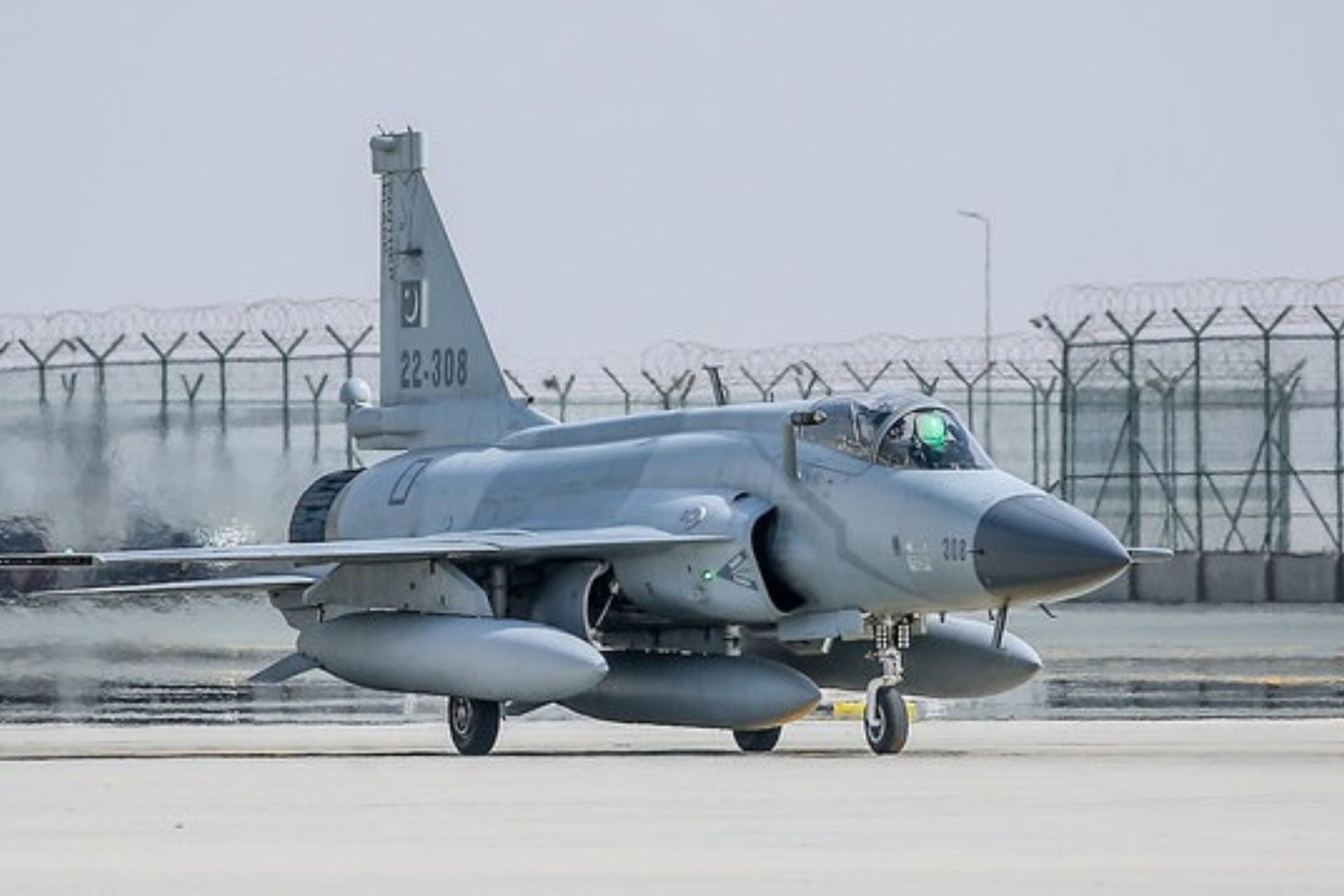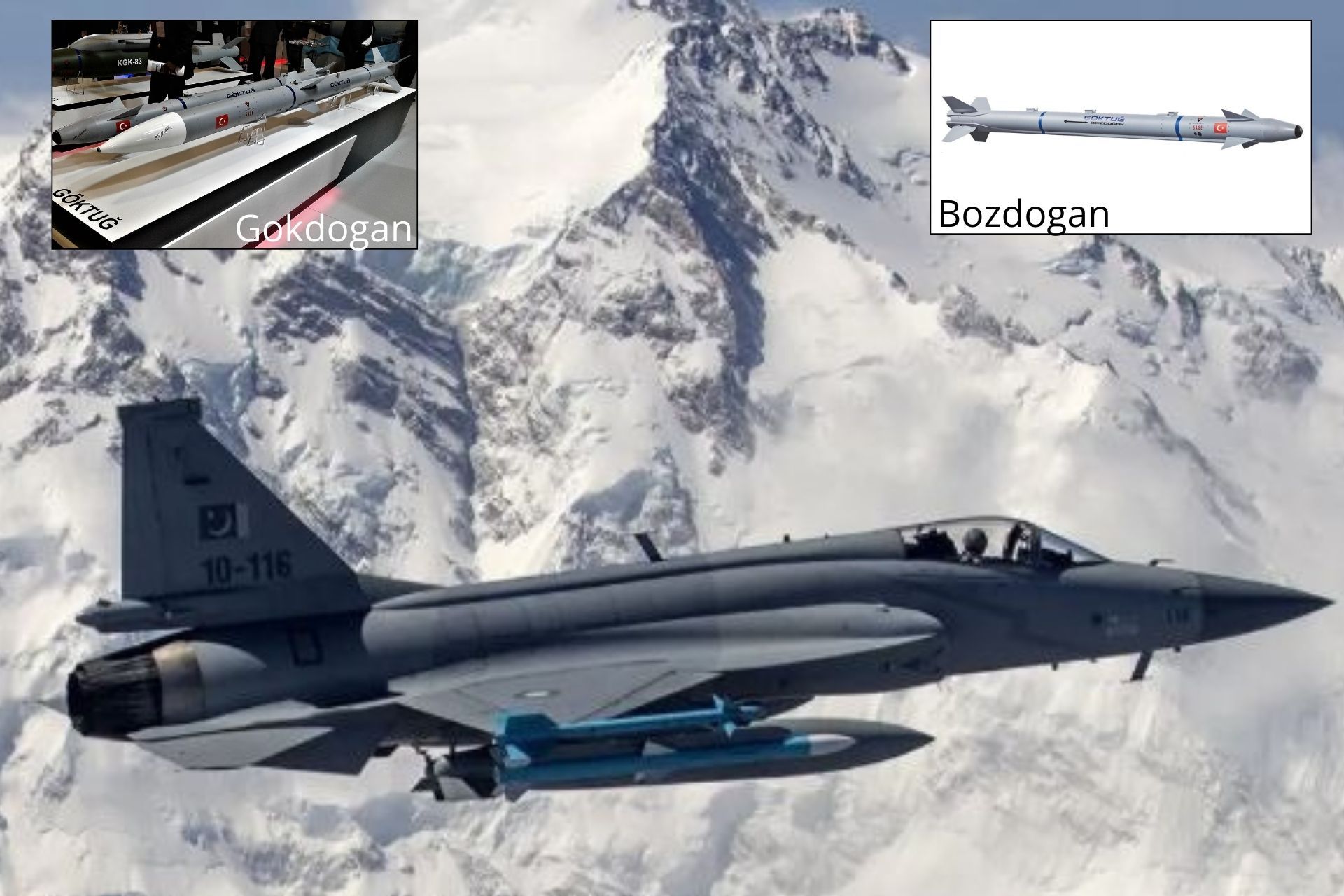Breaking News
Azerbaijan Invests in Turkish Missiles for Its Squadron of JF-17 Fighters.
The Azerbaijani Air Force is set to enhance its aerial combat capabilities with the acquisition of Turkish Bozdoğan and Gökdoğan missiles, which will be integrated into its JF-17-C Block III Thunder fighters, developed jointly by China and Pakistan. This decision marks a significant step in the growing military cooperation between Turkey and Azerbaijan, largely built on the close defense relations between Turkey and Pakistan. In addition to these advanced air-to-air missiles, the Azerbaijani fighters will also benefit from the integration of sophisticated Turkish avionics, further improving their operational effectiveness.
Follow Army Recognition on Google News at this link

The JF-17 is designed to be a lightweight yet versatile fighter capable of performing various missions, including air superiority, ground attack, and reconnaissance (Picture source: Wikimédia)
The JF-17 Thunder, also known as the FC-1 Xiaolong in China, is a multirole fighter developed jointly by the Aviation Industry Corporation of China (AVIC) and the Pakistan Aeronautical Complex (PAC). Designed as a cost-effective solution for air forces with limited budgets, the JF-17 has become a central component of the Pakistani Air Force’s fleet. Since its introduction, the JF-17 has been continuously upgraded through different versions, including the Block I, II, and III.
The JF-17 is designed to be a lightweight yet versatile fighter capable of performing various missions, including air superiority, ground attack, and reconnaissance. It is equipped with a wide range of armaments, from air-to-air missiles to air-to-ground missiles and guided bombs. The JF-17 has seven hardpoints (four under the wings, one under the fuselage, and two under the inner wings) that allow it to carry a maximum payload of 3,600 kg of diverse weaponry. Additionally, the JF-17 is equipped with advanced electronic countermeasures, an AESA radar in the Block III version, and electronic warfare pods to jam enemy radars and disrupt incoming missiles.
In terms of avionics, the JF-17 features modern technology, including a glass cockpit with multifunction displays, a Head-Up Display (HUD), and a digital mission management system. The Block III version, the most recent, includes significant advancements such as the AESA radar, an infrared search and track (IRST) system, and enhanced communication systems for better interoperability with other platforms and real-time information sharing.
The Bozdoğan and Gökdoğan missiles, developed by TÜBİTAK SAGE, represent the latest technological advancements in Turkey’s defense industry. The Bozdoğan, a short-range missile, is designed for close combat, offering increased accuracy through its infrared guidance system. Measuring approximately three meters in length and powered by a solid-fuel rocket motor, it can reach targets within a 25-kilometer radius, causing significant damage with its fragmentation warhead.
The Gökdoğan, on the other hand, is intended for medium-range engagements beyond visual range. This 3.7-meter missile, also powered by a solid-fuel rocket motor, combines advanced guidance systems using inertial navigation, mid-flight updates via datalink, and an active radar for final targeting. With an operational range of up to 65 kilometers, it can destroy distant targets with its 20 to 25-kilogram explosive warhead.

The integration of Turkish missiles into Azerbaijani fighters is made possible through defense cooperation between Turkey and Pakistan (Picture source: PAF)
This integration of Turkish missiles into Azerbaijani fighters is made possible through defense cooperation between Turkey and Pakistan. This collaboration, which includes essential technology transfers to Pakistan, also extends to training, joint exercises, and potential joint projects in other missile technology domains. These efforts aim to equip both nations with capabilities comparable to modern Western systems while enhancing their independence from foreign suppliers.
Azerbaijan has recently decided to purchase 24 JF-17-C Block III Thunder fighters, with the first delivery expected next year and the entire order to be fulfilled by 2027. The addition of the Bozdoğan and Gökdoğan missiles to Azerbaijan’s arsenal will undoubtedly boost confidence in the ability of these aircraft and their pilots to protect the country’s airspace effectively.
Turkey’s defense industry, through these developments, is emerging as a key player in advanced military technology, reducing its dependency on foreign suppliers while enhancing its export potential. The success of these missile systems is likely to attract the attention of allied nations seeking advanced and cost-effective air defense solutions, as demonstrated by Azerbaijan’s example.
In addition to the JF-17 Thunder, the Azerbaijani Air Force has a diverse fleet that includes various aircraft of Russian and Israeli origin. Among them are several Russian-made MiG-29s, multirole fighters designed for air superiority and ground attack missions. Azerbaijan also operates Su-25s, robust and reliable ground attack aircraft, also of Russian origin, used for close air support missions. The country also possesses Su-24s, supersonic tactical bombers used for precision strikes against ground targets. Additionally, Azerbaijan has invested in Israeli-made drones, such as the Hermes 450 for reconnaissance and the Harop for attack missions, further enhancing its surveillance and precision strike capabilities.


























